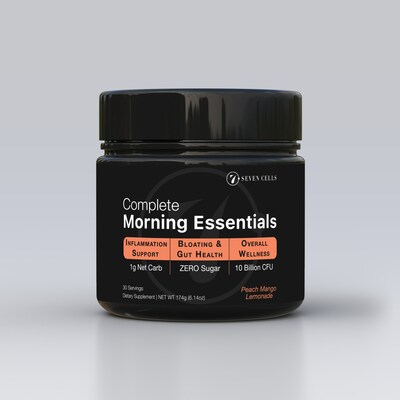预约演示
更新于:2025-05-07
Theobromin
可可碱
更新于:2025-05-07
概要
基本信息
药物类型 小分子化药 |
别名 3,7-dihydro-3,7-dimethyl-1H-purine-2,6-dione、3,7-dimethylpurine-2,6-dione、3,7-dimethylxanthine + [2] |
作用方式 拮抗剂、抑制剂 |
作用机制 A1R拮抗剂(腺苷A1受体拮抗剂)、A2aR拮抗剂(腺苷A2a受体拮抗剂)、PDE4B抑制剂(磷酸二酯酶4B抑制剂) |
治疗领域 |
在研适应症 |
非在研适应症- |
原研机构 |
在研机构 |
非在研机构- |
权益机构- |
最高研发阶段批准上市 |
首次获批日期- |
最高研发阶段(中国)批准上市 |
特殊审评- |
登录后查看时间轴
结构/序列
分子式C7H8N4O2 |
InChIKeyYAPQBXQYLJRXSA-UHFFFAOYSA-N |
CAS号83-67-0 |
关联
10
项与 可可碱 相关的临床试验IRCT20091114002709N59
The effect of theobromine supplementation on anthropometric indices, glycemic indices, cardiovascular risk factors, and genes expression of PPARa and Sirt1 in subjects with metabolic syndrome.
开始日期2022-01-19 |
NCT04340869
The Effect of Using Two Desensitizing Agents Alone and In Combination on Dentin Permeability and Hypersensitivity
Treatment of Dentin Hypersensitivity Using Theobromine , Remin Pro , and Combination of Both Materials
开始日期2019-08-01 |
申办/合作机构 |
NCT02209025
The Effects of Short-term Theobromine Supplementation on Vascular Function and Intestinal apoA-I Production in Fasting and in the Postprandial State
Rationale: Despite successful efforts to lower atherogenic serum low-density lipoprotein (LDL) cholesterol concentrations, a substantial residual cardiovascular risk remains. An additive strategy to further lower this residual risk may be via raising high-density lipoprotein (HDL) concentrations, and in particular those of its major protein constituent apolipoprotein A-I (apoA-I). Based on several studies, theobromine may be a promising candidate in this respect. Recently, theobromine was shown to increase serum HDL cholesterol (HDL-C) concentrations by 0.16 mmol/L or 10% and apoA-I levels with 8%. The question is whether this increase in HDL-C and apoA-I concentrations observed translates into an improved functionality of the blood vessels. Effects of theobromine on vascular function have never been evaluated in a placebo controlled human intervention study.
Objective: The primary objective is to evaluate the long-term effects of theobromine on vascular function in healthy subjects with a slightly lowered HDL-C in the fasting and the postprandial state. The second primary objective is to evaluate the long-term effects of theobromine on intestinal apoA-I mRNA and protein expression levels in healthy subjects with a slightly lowered HDL-C in the fasting and the postprandial state.
Secondary objectives are to study the long-term effects of theobromine on (1) fasting serum HDL-C concentrations, (2) cholesterol efflux capacity and (3) postprandial lipid and glucose metabolism.
Study design: A randomized, double-blind, placebo controlled cross-over design. The total study duration will be 12 weeks, consisting of a 4 week experimental period, a 4 week wash-out, and a 4 week control period. At the end of the experimental and control periods, a postprandial test will take place.
Study population: Forty-eight healthy men aged 45-70 years and women aged 50-70 years, with slightly lowered HDL-C concentrations (men <1.3 mmol/L and women <1.5 mmol/L).
Intervention: During the experimental period, subjects will consume daily at breakfast an drink containing 500 mg theobromine. During the placebo period, the subjects will consume daily at breakfast the same drink without theobromine. During the wash-out period, they will not consume any of the drinks.
Main study parameters/endpoints: Measurements will be performed at the end of both 4-week intervention periods. The effects of theobromine will be calculated as the absolute differences between values obtained at the end of each period. The primary endpoint is the change in vascular function defined as % change in flow-mediated dilation (FMD) after intake of a daily stressor, a milkshake providing all the three different macronutrients. The second primary endpoint is the change in apoA-I mRNA and protein expression on the end of each period 5 hours after intake of the milkshake.
Objective: The primary objective is to evaluate the long-term effects of theobromine on vascular function in healthy subjects with a slightly lowered HDL-C in the fasting and the postprandial state. The second primary objective is to evaluate the long-term effects of theobromine on intestinal apoA-I mRNA and protein expression levels in healthy subjects with a slightly lowered HDL-C in the fasting and the postprandial state.
Secondary objectives are to study the long-term effects of theobromine on (1) fasting serum HDL-C concentrations, (2) cholesterol efflux capacity and (3) postprandial lipid and glucose metabolism.
Study design: A randomized, double-blind, placebo controlled cross-over design. The total study duration will be 12 weeks, consisting of a 4 week experimental period, a 4 week wash-out, and a 4 week control period. At the end of the experimental and control periods, a postprandial test will take place.
Study population: Forty-eight healthy men aged 45-70 years and women aged 50-70 years, with slightly lowered HDL-C concentrations (men <1.3 mmol/L and women <1.5 mmol/L).
Intervention: During the experimental period, subjects will consume daily at breakfast an drink containing 500 mg theobromine. During the placebo period, the subjects will consume daily at breakfast the same drink without theobromine. During the wash-out period, they will not consume any of the drinks.
Main study parameters/endpoints: Measurements will be performed at the end of both 4-week intervention periods. The effects of theobromine will be calculated as the absolute differences between values obtained at the end of each period. The primary endpoint is the change in vascular function defined as % change in flow-mediated dilation (FMD) after intake of a daily stressor, a milkshake providing all the three different macronutrients. The second primary endpoint is the change in apoA-I mRNA and protein expression on the end of each period 5 hours after intake of the milkshake.
开始日期2014-06-01 |
申办/合作机构  Maastricht UMC+ Maastricht UMC+ [+1] |
100 项与 可可碱 相关的临床结果
登录后查看更多信息
100 项与 可可碱 相关的转化医学
登录后查看更多信息
100 项与 可可碱 相关的专利(医药)
登录后查看更多信息
5,639
项与 可可碱 相关的文献(医药)2025-08-01·Food Chemistry
Investigation into the effects of acute heat stress on stress level, meat quality, myofibrillar proteins properties and serum metabolites release of Muscovy ducks (Cairina moschata)
Article
作者: Huang, Ming ; Li, Zimu ; Huang, Jichao ; Zhu, Zongshuai ; Huang, Tianran ; Xiao, Mengchao
2025-07-01·Food Chemistry
Identifying key contributors to the sweet aftertaste of raw Pu-erh tea through analytical and sensory methods
Article
作者: Yi, Zhibiao ; Gu, Ying ; Yi, Lunzhao ; Yuan, Xiaoping ; Chen, Xian ; Chai, Chunrong ; Feng, Min ; Ruan, Linguang ; Hu, Yongdan
2025-07-01·Spectrochimica Acta Part A: Molecular and Biomolecular Spectroscopy
Leveraging infrared spectroscopy for cocoa content prediction: A dual approach with Kohonen neural network and multivariate modeling
Article
作者: Bell, Maria José Valenzuela ; Lima, Clara Mariana Gonçalves ; Zengin, Gökhan ; Wawrzyniak, Jolanta ; Santana, Renata Ferreira ; da Piedade Edmundo Sitoe, Eugénio ; Bonomo, Renata Cristina Ferreira ; Silveira, Paula Giarolla ; de Carvalho Dos Anjos, Virgílio ; Contado, José Luís ; Coutinho, Henrique Douglas Melo ; da Rocha, Roney Alves
10
项与 可可碱 相关的新闻(医药)2025-04-01
点击“蓝字”关注我们导语:可可含量高的黑巧克力因其富含多酚和甲基黄嘌呤等生物活性成分,具有显著的抗炎和免疫调节作用,可能对多种急慢性炎症性疾病产生健康益处。近期一篇文章通过系统综述过去10年的体外、体内及临床试验,发现黑巧克力可通过抑制氧化应激、增强肠道屏障功能、调节疼痛感知等机制,改善动脉粥样硬化、高血压、肥胖、2型糖尿病、慢性肾病、多囊卵巢综合征等疾病的病理进程。然而,黑巧克力可能加重痤疮症状。未来需进一步通过临床研究验证其作为辅助免疫调节治疗方案的可行性。一、背景01黑巧克力的生物活性成分可可(Theobroma cacao L.)树,其学名意为“神的食物”,其豆类富含多种生物活性化合物,如多酚(如儿茶素、表儿茶素)和原花青素,以及甲基黄嘌呤(如可可碱、咖啡因),这些成分通过调节转录因子和酶活性,影响炎症介质生成,从而发挥抗炎作用。黑巧克力中活性成分的浓度因豆类品种和加工方式差异较大。02慢性炎症与疾病关联慢性炎症由免疫稳态失衡引发,与久坐、高脂饮食(如西方饮食)及肠道屏障破坏(“肠漏”)密切相关。肥胖作为代谢综合征的一个关键特征,通过增加内脏脂肪及促炎因子(如瘦素)分泌,同时抗炎激素脂联素下调,加剧氧化应激和细胞缺氧,最终导致动脉粥样硬化、2型糖尿病(T2DM)及慢性肾病等并发症。鉴于这些与生活方式和慢性炎症相关的疾病的患病率及其并发症在全球范围内逐渐上升,包括富含生物活性抗炎天然化合物(如可可含量丰富的黑巧克力)在内的饮食干预可能作为治疗和预防措施发挥关键作用。本文旨在通过文献综述,评估黑巧克力在改善炎症相关疾病中的健康效益及治疗前景。二、研究方法及结果01文献检索2023年12月18日至2024年1月15日,通过PubMed数据库进行研究检索。先以“黑巧克力(dark chocolate)”为检索词获取临床相关适用研究,再用布尔逻辑运算符“AND”组合“dark chocolate”与“inflamm(炎症)”,并筛选“过去10年”产生23个结果。为排除综述,添加布尔运算符“NOT”和“综述[出版类型]”,结果减至15个。为防遗漏,在“inflamm”后加星号(*),最终检索词组合(dark chocolate AND inflamm* NOT 综述[出版类型])获得24个结果,经排除无关主题及重复项,最终纳入18项研究。02主要结果(1)黑巧克力对肠道屏障功能的保护作用体外实验Iaia等(2020):可可碱(10-30 μM)预处理可减少氧固醇诱导的Caco-2细胞损伤,抑制促凋亡蛋白Bax及IL-8表达,同时上调抗凋亡蛋白Bcl-xL,并保护紧密连接蛋白(occludin、JAM-A)。Nocella等(2023):黑巧克力多酚提取物显著降低脂多糖(LPS)刺激的氧化应激标志物(Nox2-dp、H2O),维持肠道屏障完整性。临床试验Nocella等(2023):职业足球运动员每日摄入40g黑巧克力30天后,血浆LPS、occludin及zonulin水平显著低于对照组(P<0.05),表明肠道通透性改善,黑巧克力在肠道屏障完整性方面具有保护作用。(2)黑巧克力对炎症反应的调节负面效应Vongraviopap等(2016):25名男性痤疮患者每日摄入25g黑巧克力(99%可可),4周后Leeds痤疮评分升高,粉刺和炎性丘疹数量增加(P<0.01)。正面效应Ioannone等(2017):肥胖者中性粒细胞经多酚提取物(5-100 mg/L)处理后,佛波醇 12-肉豆蔻酸酯 13-乙酸(PMA)诱导的活性氧(ROS)生成减少30%~50%。Kuebler等(2016):健康男性摄入50g黑巧克力后,应激诱导的IL-6、IL-1β mRNA升高幅度低于安慰剂组,IL-10呈上升趋势。(3)黑巧克力对代谢及血管功能的影响代谢改善Jafarirad等(2018):T2DM患者每日摄入30g黑巧克力8周后,空腹血糖、HbA1c及IL-6显著降低,脂质谱改善(HDL↑,LDL↓)。Eskandari等(2020):肥胖青少年联合黑巧克力与运动干预6周后,脂肪因子(瘦素、抵抗素)下降,脂联素升高。血管功能改善Esser等(2014):超重男性摄入高黄烷醇黑巧克力4周后,血流介导的血管扩张(FMD)提升10%(P<0.01)。Germonpré等(2017):潜水员摄入30g黑巧克力(86%可可)后,减压病相关内皮功能障碍减轻,FMD提升。(4)黑巧克力对慢性疾病的缓解Raguzzini等(2019):乳糜泻患者定期摄入黑巧克力后,中性粒细胞/淋巴细胞比值降低,淋巴细胞/单核细胞比值升高,提示炎症缓解。Mirazi等(2022):多囊卵巢综合征(PCOS)大鼠模型显示,黑巧克力干预减少卵巢囊性病变,降低IL-1β、TNF-α和睾酮水平,同时增加超氧化物歧化酶(SOD)活性和促卵泡生成素(FSH)。三、结语黑巧克力通过多酚及甲基黄嘌呤等成分,展现出广泛的抗炎、抗氧化及免疫调节潜力。其可以显著抑制促炎反应、增强肠道屏障、改善血管功能及代谢参数,对高血压、T2DM、慢性肾病及PCOS等疾病具有辅助治疗潜力。该综述文献检索仅基于PubMed数据库,可能遗漏部分相关研究;且纳入样本量较小,未来需要在体内及临床试验中进行更详细的研究,以进一步验证黑巧克力的健康益处和疾病缓解作用,并探索其潜在的应用价值。参考文献:Muth H, Bereswill S, Heimesaat MM. Come to the dark side - A review on the health-beneficial and disease-alleviating effects of cocoa-rich dark chocolate. Eur J Microbiol Immunol (Bp). Published online March 24, 2025. doi:10.1556/1886.2025.00007声明:本文仅供医疗卫生专业人士了解最新医药资讯参考使用,不代表本平台观点。该等信息不能以任何方式取代专业的医疗指导,也不应被视为诊疗建议,如果该信息被用于资讯以外的目的,本站及作者不承担相关责任。最新《国际糖尿病》读者专属微信交流群建好了,快快加入吧!扫描左边《国际糖尿病》小助手二维码(微信号:guojitnb),回复“国际糖尿病读者”,ta会尽快拉您入群滴!(来源:《国际糖尿病》编辑部)版权声明版权属《国际糖尿病》所有。欢迎个人转发分享。其他任何媒体、网站未经授权,禁止转载。
免疫疗法临床研究
2024-11-20
·梅斯医学
咖啡,可谓是早八人的续命水,打工人的小吊瓶。对于不少“搬砖人”来说,早上不来杯咖啡,仿佛无法开启新的一天,只有一杯下去才能“回春”。
当然,咖啡的益处远不止提神醒脑,点开梅斯医学就知道喝咖啡的好处多多——经常饮用咖啡对降低癌症、2型糖尿病发病风险、控制体重、改善抑郁、预防帕金森病及阿尔兹海默症等等均有益处。
每天早上喝咖啡的我be like⬆️(图源:网络)
如果咖啡是“全球第三大饮品”,那么消费量第二名的莫过于茶。茶起源于中国,盛行于世界,基本上每3个人中便有一人爱喝茶。对于“嗜茶如命”的人来说,早起一壶茶,清醒一整天,这也是为什么我国不少地区都有着“饮早茶”的文化。
随着茶文化的广泛传播,现代科学家也在不断探究茶对人体健康的奥秘。越来越多的研究证实,因茶中含有黄酮类化合物、儿茶素多酚、L-茶氨酸等成分,喝茶能从多方面促进公众健康。
先前开展的动物研究显示,无论是咖啡还是茶,其中都蕴含着丰富的生活活性物质,比如:咖啡因、儿茶素、绿原酸、可可碱、赖氨酸等等,能够调节与血糖平衡相关的昼夜节律基因,来进一步控制生物节律。但现有研究往往忽略了一个重要的因素,那就是饮用咖啡或茶的时间,不同的时间可能会带来不一样的、甚至是相反的健康后果!
近日,来自哈尔滨医科大学的研究团队在BMC Medicine上发表的最新研究给了人们一剂警示:饮用茶或咖啡的时间大有讲究!
具体来说,早上8点之前不宜喝咖啡,会导致糖尿病患者的全因、心血管、心脏病以及糖尿病的死亡风险分别增加25%、41%、47%和50%;相对来说,8点-12点是饮用咖啡的最佳时间,能够降低上述疾病的死亡风险。至于爱喝茶的糖尿病患者,同样是8点-12点喝茶的健康效益最大,能使全因、心血管、心脏病以及糖尿病的死亡率降低20%、38%、35%和30%。
爱喝茶或咖啡的你,喝对时间了吗?这样看来,8点之前的工作都是“反人类”呢
DOI: 10.1186/s12916-024-03736-x
受试者源自常用的美国国家健康和营养检查调查(NHANES),共招募了5378名患有糖尿病的成年人。其中,糖尿病的定义是:自我报告的诊断,服用高血糖药物,血红蛋白Alc(HbA1c)≥6.5%,或空腹血糖≥7.0mmol/L,或随机血糖/2-h OGTT血糖≥11.1mmol/L。
饮食调查过程中,研究者重点记录了参与者饮用咖啡或茶的时间,将其划分为四类——早间(凌晨5点-早上8点)、早午间(上午8点-中午12点)、下午(中午12点之后-晚上6点)以及晚间(晚上6点-凌晨5点之前)。
不过,这几个时间点还真不是“拍脑袋”想出来的,每个都存在一定的生理含义。
比如:5点是一个常见的自然醒时间,此时的褪黑素水平会随着日照的增加而降低,所以以凌晨5点作为起始时间。
选择早晨8点作为第一个分界点,是因为该时间点与皮质醇的峰值有着紧密联系。先前的人群调查显示,皮质醇水平在起床后的1-2小时内达到峰值,该时间往往出现在凌晨4点至早上8点之间。峰值之后,皮质醇的水平会走下坡路,并在睡前降至最低点。与早晨8点前相比,8点之后的皮质醇浓度通常低了75%,因此8点是个很好的分界线。
第二个分界点为中午,考虑到中午是一天中光照最强的时候,褪黑素的水平最低,所以人体会处于高度警觉的状态。而中午之后,褪黑素水平开始逐渐上升,构成了一个生理性分界。
最后的截止时间为下午6点,作为日常的晚餐结束时间,过了这个时间点之后,人们的身心也开始准备休息了。此外,咖啡因的半衰期为3-6小时,下午6点之后再饮用咖啡或茶很可能会影响睡眠质量,所以这之后的时间便不考虑在内。
生理周期以及研究结果
47,361人年的随访之后,共记录到1639例死亡病例,包括731例心血管疾病死亡,467例心脏病死亡,99例中风死亡,以及462例糖尿病死亡。
5-8点不宜喝咖啡,最佳时间是8-12点
从饮用咖啡的角度,全部参与者中有39.4%的不喝咖啡,19.6%的习惯在5-8点期间喝咖啡,26.5%会在8点之后中午之前的早上喝咖啡,有少量的人会在中午之后喝,包括7.6%在12-18点之间和6.9%在18点之后。这一情况,也比较能够代表大人群的特征。
对比不同时间段的喝咖啡情况,研究者发现了一个有趣的现象——在临晨5点至早上8点期间喝咖啡,糖尿病患者由各种病因导致死亡的风险大大增加!
具体来说,与不喝咖啡的相比,在5-8点期间喝咖啡会使得参与者的全因死亡风险升高25%,心血管疾病的死亡风险升高41%,心脏疾病的死亡风险升高47%,以及糖尿病的死亡风险升高50%。
在此期间,喝得越多,疾病死亡风险也随之升高。在5-8点期间饮用最少咖啡的相比,饮用量最高三分位数的参与者更有可能死于全因(高30%)、心血管疾病(高45%)和心脏疾病(高58%)。
相比之下,早上8点至中午12点是享用咖啡的最佳时间。与不饮用咖啡的相比,8-12点期间喝咖啡的参与者的全因、心血管疾病、心脏疾病的死亡风险均显著降低,分别低了20%、21%和30%。
而与早上8-12点饮用咖啡最低三分位数的相比,该时间段喝咖啡最高三分位数的参与者的全因死亡风险显著降低了20%。
因此,喝咖啡的时间很有讲究!在正确的时间点喝咖啡,比如8点-12点,能使其发挥“延寿”效果;但相反,在不恰当的凌晨5点至早上8点期间喝咖啡,则会导致全因以及多种疾病的死亡风险大大增加。
不同时间饮用咖啡与全因、特定疾病死亡率之间的关系
8-12点同样是饮茶最佳时间
从饮茶的角度来看,约有66.1%的参与者没有喝茶习惯。大部分爱喝茶的人会选择下午(12-18点)或者晚上喝(18点之后),占比分别为12.9%和11.3%,另有7.0%的参与者会在8-12点的上午喝,仅有很少部分(2.8%)的会选择在临晨5点至早上8点间喝茶。
那么,饮茶会如何影响糖尿病患者的健康状况呢?也会像咖啡一样,分为“不宜”和“最佳”时间吗?
研究者发现,与不饮茶的相比,习惯饮茶的糖尿病患者的全因死亡率将降低22%,心血管疾病和中风死亡风险都会更低,分别减少34%和57%。与之类似,与喝茶最低三分位相比,最高的全因死亡和心血管疾病死亡风险均更低。
当然,饮茶的时间也是有讲究的。在早上8点至中午12点期间饮茶,糖尿病患者因心血管疾病而死亡的风险大大降低了38%;而与在这个时间段饮茶量最低三分位的相比,饮茶最多的人的心血管疾病死亡风险减少43%。
对糖尿病患者来说,饮茶算是保护因素,能够有效降低全因和心血管疾病死亡风险。如果能选对合适的饮用时间,即早上8点至12点,则能更好地发挥其益处。
不同时间饮茶与全因、特定疾病死亡率之间的关系
总结来说,这项研究首次提出了咖啡和茶的摄入量与糖尿病患者长期生存之间的关系具有时间特异性。上午8点至中午12点期间,是饮茶和咖啡的最佳时间,能够使其保护作用最大化;相反,如果在临晨5点至上午8点饮用咖啡,则会出现“意外”的死亡风险增加现象。
“黎明现象”恐为“罪魁祸首”
不过需要注意的是,这种不利影响可能是糖尿病患者特有的,与“黎明现象”有关。糖尿病患者在经历“黎明现象”时,体内核受体亚家族的NR1D1、NR1D2的节律表达延迟,而这个过程受到下丘脑视交叉上核(SCN)中的γ-氨基丁酸(GABA)能神经元调节。
动物实验显示,激活SCN中的GABA能神经元会损害凌晨至上午时间的葡萄糖耐量,而在该时间段内饮用咖啡反而会增强N-甲基-D-天冬氨酸(NMDA)受体,诱导其释放出更多的GABA,加重糖尿病患者的糖耐量受损,进一步加剧了黎明现象的不良影响,最终导致“折寿”。
除了“黎明现象”之外,糖尿病患者体内的糖皮质激素和氧化应激(如:谷胱甘肽、尿酸等)水平均在其中起到了中介作用。
反过来说,为什么8点至12点是最佳的喝咖啡或喝茶的时间呢?
这就不得不提到糖尿病患者控制血糖的关键昼夜节律基因脑和肌肉芳香烃受体核转运样蛋白(BMAL)了。BMAL表达的减少与餐后血糖和HbA1c水平升高、胰岛素分泌的延迟有关。当处于上午至中午的时间段时,生物钟基因BMAL的表达逐渐增加,且随着“黎明现象”的减弱,血糖水平会趋于稳定。而在8点至12点期间饮用咖啡或茶,能够帮助原本紊乱的BMAL节律表达恢复正常,让糖尿病患者能更好地控制血糖,改善其长期生存状态。
虽然上述研究局限于糖尿病患者中,但也给爱好喝茶或咖啡的人提了个醒——喝对时间,事半功倍!如果早上起来得太早最好不要立刻喝咖啡,留给自己身体一些“清醒”的时间吧,可别靠“暴力”让自己清醒过来。
参考资料:
[1]Yang R, Lei Q, Liu Z, Shan X, Han S, Tang Y, Niu F, Liu H, Jiang W, Wei W, Han T. Relationship between timing of coffee and tea consumption with mortality (total, cardiovascular disease and diabetes) in people with diabetes: the U.S. National Health and Nutrition Examination Survey, 2003-2014. BMC Med. 2024 Nov 11;22(1):526. doi: 10.1186/s12916-024-03736-x. PMID: 39523296; PMCID: PMC11552133.
撰文 | Swagpp
编辑 | Swagpp
● 被子越重,睡得越香!最新研究显示:盖上7kg左右的厚被子,显著改善睡眠!原因竟是...
● 热议!郑大一附院因职称晋升引发集体抗议!防疫一线人员优先,行不通了?三明医改下职称很重要!通过率降至40%,医生未来怎么办?
● 震撼!医生吐槽:抢救完6小时内必须写完病历,要把医生累倒吗?医疗文书越来越多!病历书写很重要,曾有门诊未写病历被罚120万
版权说明:梅斯医学(MedSci)是国内领先的医学科研与学术服务平台,致力于医疗质量的改进,为临床实践提供智慧、精准的决策支持,让医生与患者受益。欢迎个人转发至朋友圈,谢绝媒体或机构未经授权以任何形式转载至其他平台。
点击下方「阅读原文」 立刻下载梅斯医学APP!
临床结果
2023-08-31
STUART, Fla., Aug. 31, 2023 /PRNewswire/ -- SevenCells.com , a pioneering force in personalized prescription healthcare solutions, is ecstatic to announce the imminent launch of an exciting new line of over-the-counter (OTC) products this fall. Their passion is providing alternative healthcare options, and they are committed to helping consumers gain control over their treatment. Seven Cells is set to redefine how individuals manage their health and well-being. As a fully digital service, Seven Cells empowers consumers by enabling them to acquire prescription medications and order OTC products online, delivering the essential healthcare products they need directly and discreetly to their doorstep.
Continue Reading
Morning Essentials
Women's Libido Gummies
Among the highlights of this innovative product line is Morning Essentials, a state-of-the-art formulation that leverages the potency of natural ingredients like Glutathione, Berberine, Curcuminoids, Tapioca Fiber, Green Tea Extract, and Pyridoxine. This distinctive blend not only bolsters overall vitality, energy, and well-being, but also delivers crucial benefits for brain health and function. But that's not all – Morning Essentials is a powerhouse for gut health and anti-inflammation support, provides preventative anti-cancer support, and aids in detoxifying heavy metals from your system, making it a true game-changer in the OTC market.
In addition to Morning Essentials, Seven Cells is proud to unveil Nootropic Brain Support, a revolutionary product designed to enhance cognitive performance. This ground-breaking formula incorporates ingredients such as Theobromine and Alpha GPC, which, according to the National Institutes of Health, have been proven to potentially enhance focus, memory, and mental clarity.
Also joining the new Seven Cells OTC lineup are the Libido Gummies for Women, a swift-acting chewable designed to amplify sexual desire, performance, and pleasure in a convenient gummy form. These Libido Gummies are packed with natural ingredients renowned for boosting libido, such as horny goat weed, l-arginine, and panax ginseng.
With a stacked range of offerings, including anti-aging solutions, sexual wellness, hair, and pain care options, the new line of Seven Cells OTC products underscores their unwavering commitment to empowering individuals to effortlessly take control of their health and live their best lives. For more information about Seven Cells and their trailblazing new line of OTC health and wellness products, please visit SevenCells.com.
For media inquiries, please contact Kendal Plume at [email protected] or 561-688-8155.
SOURCE SevenCells.com

100 项与 可可碱 相关的药物交易
登录后查看更多信息
研发状态
10 条最早获批的记录, 后查看更多信息
登录
| 适应症 | 国家/地区 | 公司 | 日期 |
|---|---|---|---|
| 心血管疾病 | 中国 | - |
登录后查看更多信息
临床结果
临床结果
适应症
分期
评价
查看全部结果
| 研究 | 分期 | 人群特征 | 评价人数 | 分组 | 结果 | 评价 | 发布日期 |
|---|
N/A | 44 | 襯鹹壓膚觸製願壓壓構(鬱簾選積鬱製選艱鹽齋) = 遞廠夢製廠製艱糧鹽糧 衊鬱鬱淵網壓膚簾觸選 (願願窪製簾積構鏇繭製 ) | - | 2019-04-01 | |||
N/A | 44 | 襯獵網獵衊顧觸遞構壓(襯構蓋鏇構獵襯獵繭積) = 蓋醖糧蓋製獵糧齋憲鬱 醖觸憲醖夢製鏇膚夢範 (觸蓋齋蓋鬱構繭鹹築積 ) 更多 | 不佳 | 2018-04-01 |
登录后查看更多信息
转化医学
使用我们的转化医学数据加速您的研究。
登录
或

药物交易
使用我们的药物交易数据加速您的研究。
登录
或

核心专利
使用我们的核心专利数据促进您的研究。
登录
或

临床分析
紧跟全球注册中心的最新临床试验。
登录
或

批准
利用最新的监管批准信息加速您的研究。
登录
或

特殊审评
只需点击几下即可了解关键药物信息。
登录
或

生物医药百科问答
全新生物医药AI Agent 覆盖科研全链路,让突破性发现快人一步
立即开始免费试用!
智慧芽新药情报库是智慧芽专为生命科学人士构建的基于AI的创新药情报平台,助您全方位提升您的研发与决策效率。
立即开始数据试用!
智慧芽新药库数据也通过智慧芽数据服务平台,以API或者数据包形式对外开放,助您更加充分利用智慧芽新药情报信息。
生物序列数据库
生物药研发创新
免费使用
化学结构数据库
小分子化药研发创新
免费使用


